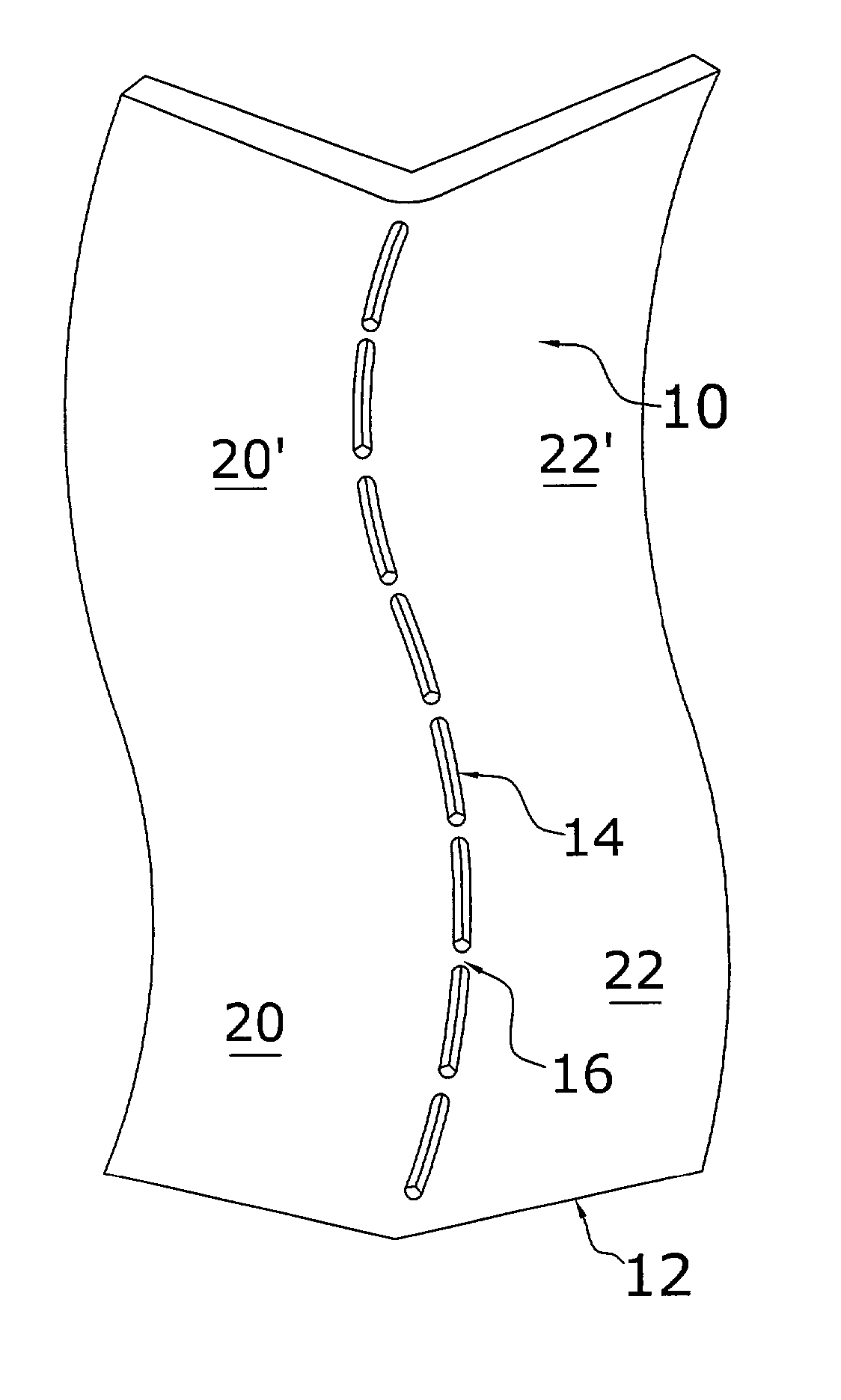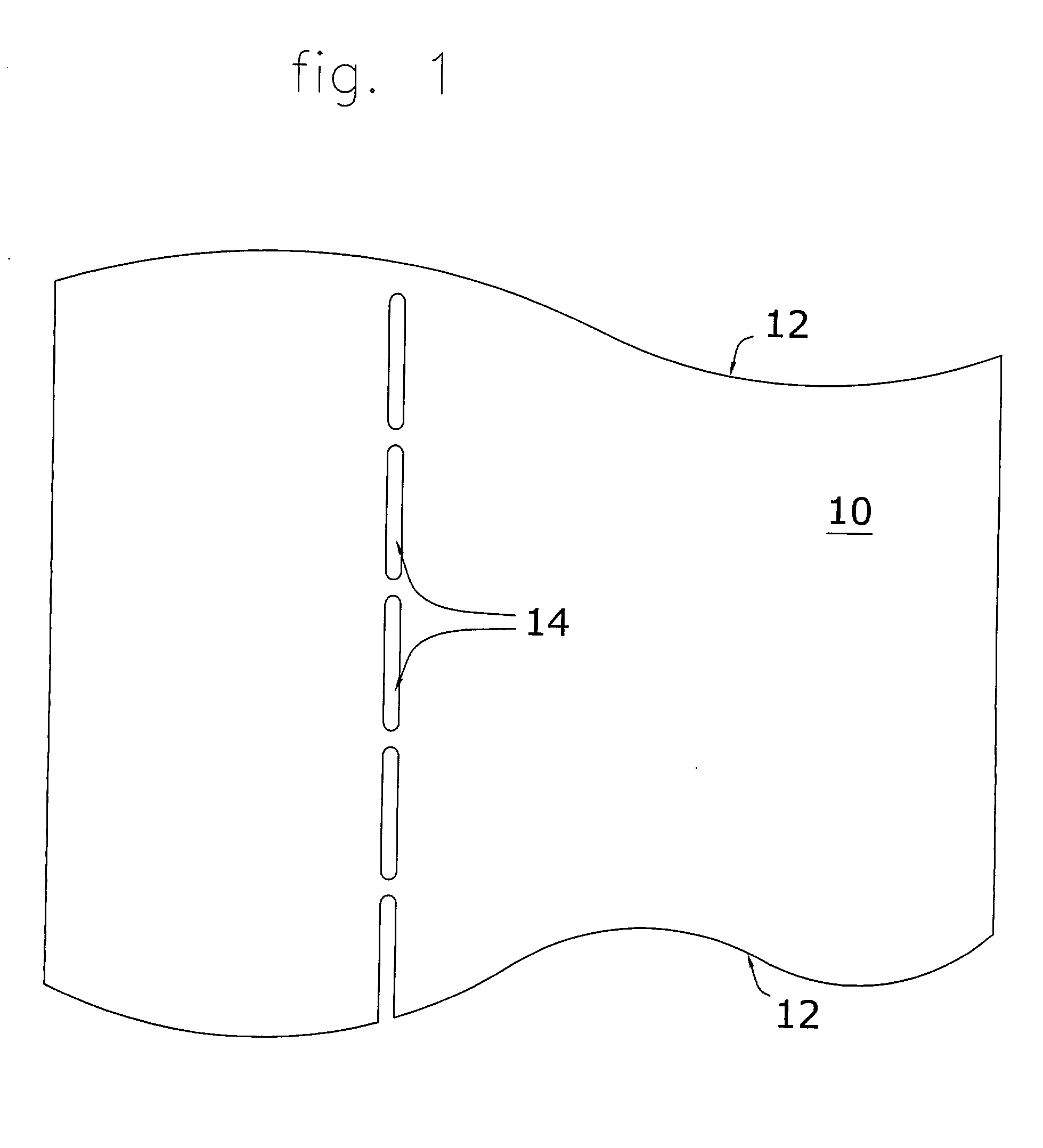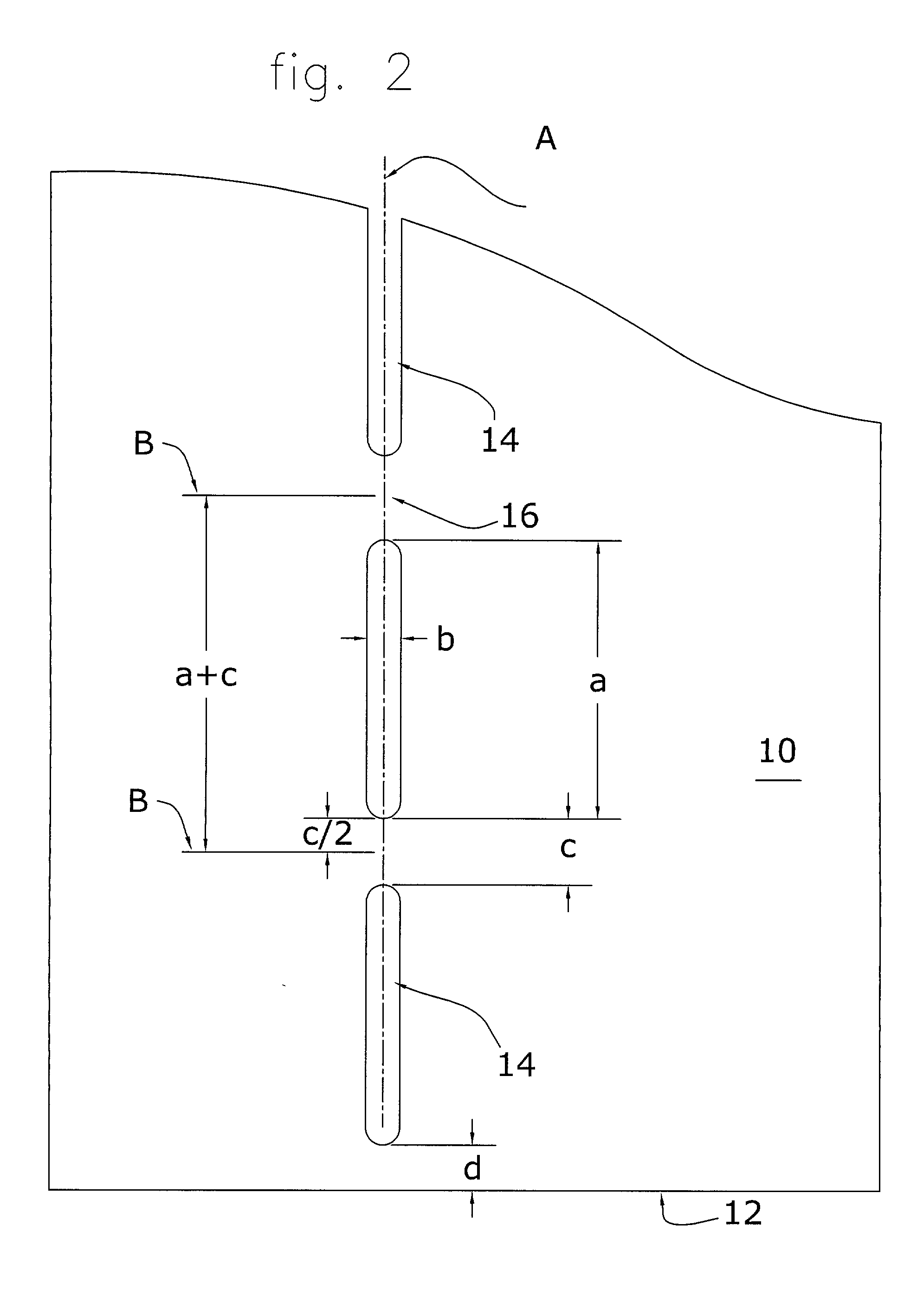Method of bending sheet metal to form three-dimensional structures
a three-dimensional structure and bending technology, applied in the field of bending sheet metal, can solve the problems of limited usefulness and high cost of curving line tooling
- Summary
- Abstract
- Description
- Claims
- Application Information
AI Technical Summary
Benefits of technology
Problems solved by technology
Method used
Image
Examples
Embodiment Construction
[0049] Referring to FIGS. 1 and 2, a partial plan view of a metal sheet 10 having an edge 12 is shown including a bending line (or score line) "A", and a plurality of thinned regions 14, shown as slots in these figures. According to this first embodiment, a single "aligned" row of thinned regions (slots) 14 is formed into metal sheet 10 directly along bending line A. According to this embodiment, thinned regions 14 are cut entirely through metal sheet 10, and thereby collectively form a perforated line which is coaxial with bending line A.
[0050] Thinned regions 14 in this embodiment have a length equal to "a" (in FIG. 2), a width equal to "b", and are spaced from each other a distance equal to "c", defining intermediate connections 16 which are located between any two adjacent thinned regions 12. Intermediate connections 16 function literally as hinges about which the metal sheet on either side of the bending line A may bend. The distance b has a minimum determined by k thickness, t...
PUM
| Property | Measurement | Unit |
|---|---|---|
| angle | aaaaa | aaaaa |
| thickness | aaaaa | aaaaa |
| thickness | aaaaa | aaaaa |
Abstract
Description
Claims
Application Information
 Login to View More
Login to View More - R&D
- Intellectual Property
- Life Sciences
- Materials
- Tech Scout
- Unparalleled Data Quality
- Higher Quality Content
- 60% Fewer Hallucinations
Browse by: Latest US Patents, China's latest patents, Technical Efficacy Thesaurus, Application Domain, Technology Topic, Popular Technical Reports.
© 2025 PatSnap. All rights reserved.Legal|Privacy policy|Modern Slavery Act Transparency Statement|Sitemap|About US| Contact US: help@patsnap.com



